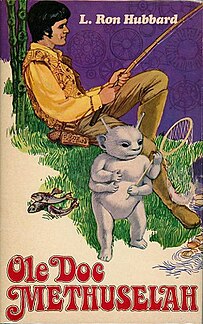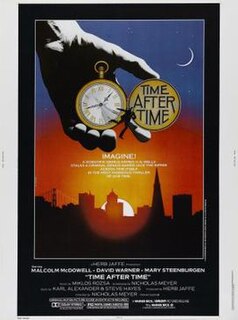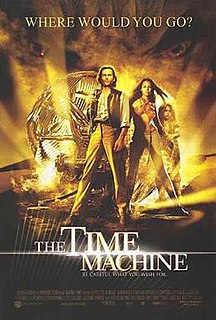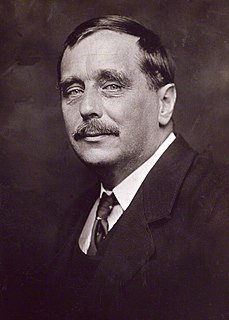
Comic fantasy is a subgenre of fantasy that is primarily humorous in intent and tone. Usually set in imaginary worlds, comic fantasy often includes puns on and parodies of other works of fantasy.
Feminist science fiction is a subgenre of science fiction focused on theories that include feminist themes including but not limited to gender inequality, sexuality, race, economics, and reproduction. Feminist SF is political because of its tendency to critique the dominant culture. Some of the most notable feminist science fiction works have illustrated these themes using utopias to explore a society in which gender differences or gender power imbalances do not exist, or dystopias to explore worlds in which gender inequalities are intensified, thus asserting a need for feminist work to continue.
Science fiction and fantasy serve as important vehicles for feminist thought, particularly as bridges between theory and practice. No other genres so actively invite representations of the ultimate goals of feminism: worlds free of sexism, worlds in which women's contributions are recognized and valued, worlds that explore the diversity of women's desire and sexuality, and worlds that move beyond gender.

Sword and sorcery (S&S) is a subgenre of fantasy characterized by sword-wielding heroes engaged in exciting and violent adventures. An element of romance is often present, as is an element of magic and the supernatural. Unlike works of high fantasy, the tales, though dramatic, focus mainly on personal battles rather than world-endangering matters. Sword and sorcery commonly overlaps with heroic fantasy.
Comic science fiction or comedy science fiction is a subgenre of soft science fiction or science fantasy that exploits the science-fiction (SF) genre's conventions for comedic effect. Comic science fiction often mocks or satirizes standard SF conventions - such as alien invasion of Earth, interstellar travel, or futuristic technology. It can also satirize and criticize present-day society.

Dark fantasy is a subgenre of fantasy literary, artistic, and cinematic works that incorporate darker and frightening themes of fantasy. It also often combines fantasy with elements of horror or has a gloomy, dark atmosphere, or a sense of horror and dread.

An extraterrestrial or alien is any extraterrestrial lifeform; a lifeform that did not originate on Earth. The word extraterrestrial means "outside Earth". The first published use of extraterrestrial as a noun occurred in 1956, during the Golden Age of Science Fiction.
The timestream or time stream is a metaphorical conception of time as a stream, a flowing body of water. In Brave New Words: The Oxford Dictionary of Science Fiction, the term is more narrowly defined as: "the series of all events from past to future, especially when conceived of as one of many such series". Timestream is the normal passage or flow of time and its historical developments, within a given dimension of reality. The concept of the time stream, and the ability to travel within and around it, are the fundamentals of a genre of science fiction.
Paranormal romance is a subgenre of both romantic fiction and speculative fiction. Paranormal romance focuses on romantic love and includes elements beyond the range of scientific explanation, blending together themes from the speculative fiction genres of fantasy, science fiction, and horror. Paranormal romance may range from traditional category romances, such as those published by Harlequin Mills & Boon, with a paranormal setting to stories where the main emphasis is on a science fiction or fantasy-based plot with a romantic subplot included. Common hallmarks are romantic relationships between humans and vampires, shapeshifters, ghosts, and other entities of a fantastic or otherworldly nature.

Space Western is a subgenre of science fiction which uses the themes and tropes of Westerns within science fiction stories. Subtle influences may include exploration of new, lawless frontiers, while more overt influences may feature literal cowboys in outer space who use ray guns and ride robotic horses. Although initially popular, a strong backlash against perceived hack writing caused the genre to become a more-subtle influence until the 1980s, when it regained popularity. A further critical reappraisal occurred in the 2000s with Firefly.

The term insectoid denotes any creature or object that shares a similar body or traits with common earth insects and arachnids. The term is a combination of "insect" and "-oid".
Richard Neil Barron was a science fiction bibliographer and scholar. His training was as a librarian. He is perhaps best known for his book Anatomy of Wonder: A Critical Guide to Science Fiction. He won the Pilgrim Award for Lifetime Achievement in the field of science fiction scholarship in 1982. He died on September 5, 2010 in Las Vegas, Nevada.

Fiona Kelleghan is an American academic and critic specializing in science fiction and fantasy. She was a metadata librarian and a cataloguer at the University of Miami's Otto G. Richter Library. She left the University in 2011.

Lou Anders is the author of the Thrones & Bones series of middle grade fantasy novels. Anders is a Hugo Award-winning American editor, a Chesley Award-winning art director, an author and a journalist.

Feminist literature is fiction, nonfiction, drama or poetry which supports the feminist goals of defining, establishing and defending equal civil, political, economic and social rights for women. It often identifies women's roles as unequal to those of men – particularly as regards status, privilege and power – and generally portrays the consequences to women, men, families, communities and societies as undesirable.

Ole Doc Methuselah is a collection of science fiction short stories by American writer L. Ron Hubbard, published in 1970.

Space opera is a subgenre of science fiction that emphasizes space warfare, melodramatic adventure, interplanetary battles, chivalric romance, and risk-taking. Set mainly or entirely in outer space, it usually involves conflict between opponents possessing advanced abilities, futuristic weapons, and other sophisticated technology. The term has no relation to music, but is instead a play on the terms "soap opera" and "horse opera", the latter of which was coined during the 1930s to indicate clichéd and formulaic Western movies. Space operas emerged in the 1930s and continue to be produced in literature, film, comics, television and video games.

The following outline is provided as an overview of and topical guide to fantasy:
The year 1907 was marked, in science fiction, by the following events.















